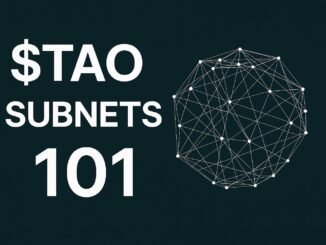
On November 7, 2025, Chutes announced that Kimi K2 Thinking, a newly released open-source model from Moonshot AI, is now available on its network.
In a post on X, Chutes highlighted the model’s features, including a 256K context window, advanced reasoning, and multi-step tool use—all powered by decentralized inference. Users can access the model directly through the Chutes app.
The update underscores how Chutes’ serverless infrastructure allows users to deploy and scale sophisticated models without managing hardware, in line with its goal to democratize access to computation.
About Kimi K2 Thinking
Kimi K2 Thinking is a Mixture-of-Experts model built by Moonshot AI, a startup supported by Alibaba. Released on November 6, it features one trillion total parameters, with 32 billion activated per inference, ranking it among the largest open-weight models available.
Developed as a “thinking agent,” it shows strong performance in reasoning, search, coding, and long-horizon tasks, with leading benchmark results such as 44.9% on HLE, 60.2% on BrowseComp, and 93% on τ²-Bench Telecom.
The model can execute 200 to 300 tool calls in sequence without human input and supports test-time scaling for both thinking tokens and tool usage. It is optimized for efficiency with INT4 precision and trained using the Muon optimizer. Kimi K2 Thinking is available through Moonshot’s API, its open weights on Hugging Face, and now via Chutes.
Analysts have described the release as a breakthrough for open innovation in China, comparing its impact to DeepSeek’s earlier success. The training reportedly cost around $4.6 million and follows earlier Kimi K2 instruct versions from July and September 2025.
About Chutes
Chutes operates as Subnet 64 on the Bittensor network, providing decentralized serverless compute for deploying and scaling large models. It handles trillions of tokens monthly and is used by applications such as Squad and Chutes Chat.
The addition of Kimi K2 Thinking represents a step toward connecting frontier models with decentralized infrastructure, reducing dependence on centralized providers, and expanding the reach of open computation.




Be the first to comment